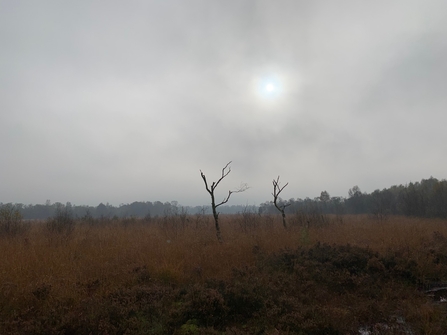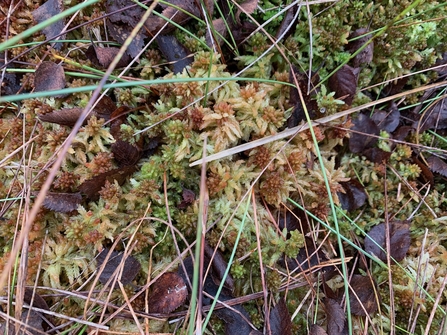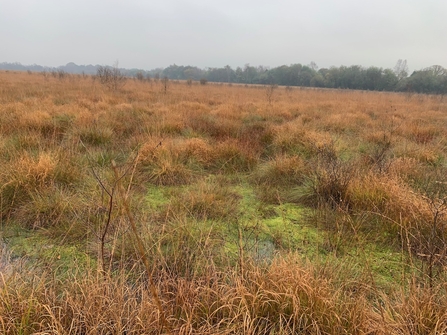Mist haunts Astley Moss as the last leaves fall from the trees and we enter the dead season, evoking ghosts, spirits of the past when this mossland was part of the larger complex of Chat Moss.
Approaching from what was once the edge of the mossland, following ways once far more treacherous, stepping across tussocks of hare’s tail cottongrass to avoid spongy hummocks of Sphagnum moss and deeper bog pools in between comes a group of misty figures.
It is impossible to tell how many are ghosts and how many but shapes conjured by the mist. There are three, at least, two of them holding, leading, a third, who looks like a prisoner. He is a man, aged around 25 years old, with defined brows, a square jaw, and a broad, flat nose. His eyes are blue and his hair is light brown, oddly touched by grey, in spite of his youth. What stands out most is his swollen right ear suggesting he’s been in many fights.
He’s a big man, strong, well-built, and yet he comes quietly. He puts up no resistance when they halt before a bog pool and the two cloaked figures strip him of his cloak and force him to his knees. He begins to pray in a language that sounds a little like present-day Welsh.
His prayers are put to an end by a bloody blow behind his right ear and replaced by harsher invocations as one of the figures raises an axe and smashes it down on top of his skull. As he topples forward he is held upright as the axe cuts once, nicks his neck, twice, severs his head. The man with the axe picks up his head and deposits it in the bog pool with whispered words.




